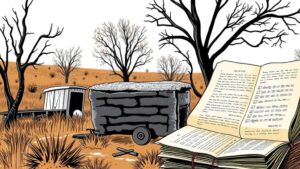How to Use Free Geological Maps for Fossil and Gem Hunting
How to Use Free Geological Maps for Fossil and Gem Hunting
The quest for fossils and gemstones combines adventure, science, and the thrill of discovery. Free geological maps, accessible to the public, serve as essential tools for enthusiasts and researchers alike. This article explores practical methodologies for utilizing these maps to locate valuable geological specimens effectively.
Understanding Geological Maps
Geological maps convey critical information about the composition, structure, and age of rocks in a particular area. Instead of traditional topographic maps, geological maps focus on the distribution of various rock types, stratigraphy, and geological formations. They typically include:
- Legend: A key that explains the symbols used.
- Color Codes: These depict different geological formations.
- Line Notations: These represent fault lines, folds, and other geological features.
For example, the U.S. Geological Survey provides a comprehensive collection of maps that can be downloaded for free, covering areas known for fossil and gem deposits.
Locating Fossil Bedrock
Fossils are remnants of past life, often embedded in sedimentary rock. Regions with abundant fossil deposits generally correlate with specific geological periods and environments. Using geological maps can help identify locations where sedimentary rock formations exist, increasing the likelihood of fossil discoveries.
One noteworthy example is the Hell Creek Formation, which spans parts of Montana, South Dakota, and North Dakota. This area is rich in dinosaur fossils from the Late Cretaceous period. On geological maps, you can identify this formation and plan fossil hunting expeditions accordingly.
Identifying Gemstone Locations
Gem hunting requires a different approach, as gemstones are typically found in metamorphic or igneous rock settings. Geological maps can inform hunters about the mineral compositions and types of rocks in prospective areas. For example, areas mapped with granite formations may reveal potential sources of gemstones such as garnets or tourmalines.
Take the state of Arkansas as an example. state geological map indicates several quartz crystal deposits, particularly in the Ouachita Mountains region. According to the Arkansas Geological Survey, this area has produced some of the most significant quartz crystals in the United States.
Utilizing Online Resources and Tools
Modern technology allows for easy access to geological maps. Websites such as U.S. Geological Survey and Geology.com provide extensive databases of geological maps for different regions. Users can often filter results based on specific interests, such as fossil or gemstone hunting.
Other notable platforms include:
- National Earth System Science Data Center: Offers interactive maps with geological features.
- Local Geological Surveys: Many states provide online geological maps specific to their regions.
Planning an Effective Expedition
Once you have identified suitable locations through geological maps, plan your expedition with the following steps:
- Research Local Regulations: Ensure compliance with local laws regarding fossil collection and land access.
- Prepare Necessary Equipment: Essential tools may include hammers, chisels, brushes, and safety gear.
- Coordinate with Local Experts: Engaging with local geological societies can provide valuable insight and tips specific to the region.
Safety and Environmental Concerns
While pursuing fossils and gemstones can be exciting, it is vital to be aware of safety and environmental issues. Always prioritize safety by:
- Wearing Protective Gear: Safety glasses and gloves are recommended to avoid injuries.
- Practicing Responsible Collecting: Ensure that your activities do not harm local ecosystems.
Conclusion
In summary, free geological maps are invaluable resources for fossil and gem enthusiasts. By understanding how to interpret these maps, identifying the right geological formations, and planning effective expeditions, you can enhance your chances of discovering remarkable specimens. Engaging with the geological community further enriches your experience and knowledge.
For a successful hunt, embrace the adventure, respect the environment, and continue to learn as you explore the fascinating world of geology.



